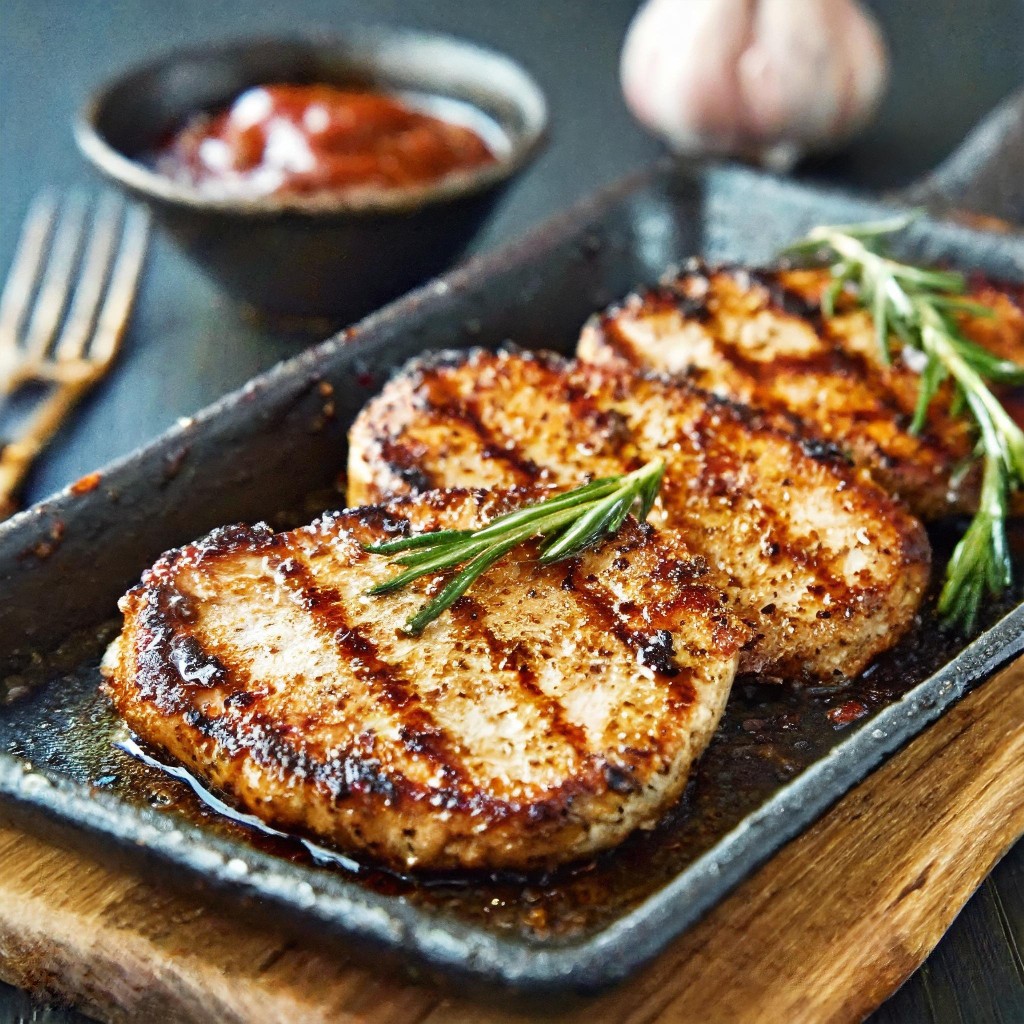Thin pork chops, often called “minute steaks” due to their quick cooking time, can be a weeknight lifesaver. They’re affordable, versatile, and pack a protein punch. But their thinness can also be a challenge. Overcook them, and you end up with dry, rubbery meat.
This article equips you with everything you need to transform thin pork chops into a satisfying and flavorful meal.
Tenderizing Techniques
Thin pork chops have a tendency to dry out during cooking. Here are a few tricks to keep them juicy and tender:
- Brining: Brining is a simple technique that involves soaking the pork chops in a saltwater solution for 30 minutes to an hour. This plumps up the meat fibers and infuses them with flavor. You can use plain water with salt, or add other aromatics like herbs, spices, or even buttermilk for additional depth.
- Marinating: Marinades work similarly to brines, but often contain acidic ingredients like vinegar or lemon juice. Marinades not only tenderize the meat but also infuse it with additional flavors. Marinate your thin pork chops for at least 30 minutes, or even overnight for maximum impact.
Flavor Boosters
While brining and marinating add moisture and flavor, you can further enhance your thin pork chops with some clever seasoning strategies:
- Spice Rubs: Create a flavorful spice rub using a combination of paprika, garlic powder, onion powder, dried thyme, and cayenne pepper (optional for a kick). Rub the spice mix generously onto both sides of the pork chops before cooking.
- Dredging: Dredge your pork chops in a mixture of flour, salt, and pepper for a crispy crust that seals in the juices. You can also add a touch of breadcrumbs or panko for added texture.
Cooking Techniques
The key to thin pork chops lies in understanding how heat transfers. Here are some tips for achieving perfectly cooked meat:
- High Heat & Short Cooking Time: Since they’re thin, use high heat to quickly sear the outside while keeping the inside moist. Aim for 2-3 minutes per side depending on the thickness.
- Pat Them Dry: Excess moisture on the surface prevents proper browning. Pat your pork chops dry with paper towels before seasoning.
- Season Generously: Don’t be shy with the salt and pepper! Season both sides generously before cooking. You can also add other spices like paprika, garlic powder, or Italian seasoning for extra flavor.
- Don’t Crowd the Pan: Overcrowding lowers the pan’s temperature, leading to steamed rather than seared pork chops. Cook them in batches if necessary.
- Temperature is Key: The safe internal temperature for cooked pork is 145°F (63°C). Use a meat thermometer to ensure doneness without overcooking.
Taking it Up a Notch
Once you’ve mastered the basics, you can explore a variety of recipes to transform your thin pork chops into exciting dishes. Here are some ideas:
- Parmesan Crusted Pork Chops: Dredge your pork chops in a mixture of flour, grated parmesan cheese, and panko breadcrumbs. Pan-fry until golden brown and serve with a side of marinara sauce for dipping.
- Honey Garlic Pork Chops: Marinate your pork chops in a mixture of soy sauce, honey, garlic, and ginger. Pan-fry the chops, then deglaze the pan with the marinade to create a sweet and savory sauce.
- Schnitzel: This classic German dish involves coating thin pork chops in flour, beaten egg, and breadcrumbs before pan-frying until golden brown. Serve with lemon wedges and potato salad.
The Bottom Line
Thin pork chops don’t have to be boring! With a little know-how recipe and creativity, you can transform them into delicious and satisfying meals. So, the next time you have thin pork chops on hand, don’t hesitate to experiment and create a culinary masterpiece!








